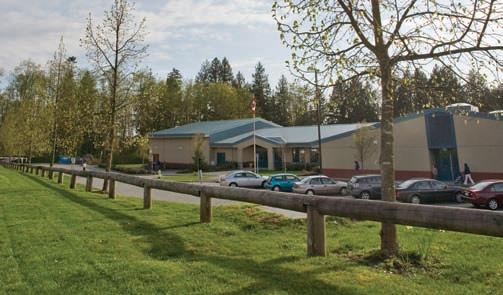SPOA_Spr_2010:SPOA_Template.qxd
5/5/2010
5:10 PM
Page 51
Strategic asset management business planning BY STEVE CRIPPS AND DAVID MOLINARO
School facility departments for Kindergarten to Grade 12 schools need to initiate strategic business processes and enhance organizational competencies to successfully develop, implement and sustain a strategic asset management-based organization. Senior managers are an integral part of a corporate business/education environment and as such, can contribute significantly to improved learning outcomes. These outcomes include but are not restricted to: • Alignment with corporate vision, mission, values and purpose of the school division; • Facility service delivery practices anchored to enhanced education outcomes; • Critical success factors are identified and goals developed within believable, achievable and sustainable time milestones/budgets; • Core competencies strengthened to reflect changing work environment; • Transformational, strategic initiatives linking all aspects of facility management embedded in workplace culture; • Sustainable asset management solutions. Strategic asset management (SAM) business planning is a process that builds a strong foundation for the future. The process promotes relevancy in an environment of fast-paced fiscal and educational change. Strategic asset management planning is a blend of reflection and action. Reflection consists of scanning and planning activities that ensure relevancy in service deliverables; action consists of implementation and evaluation activities that result in valued outcomes. SAM business planning is a continuous improvement process engaging all stakeholders in the school infrastructure environment. The plan must refresh itself on a regular basis, generally a three-year cycle. School boards are faced with organizational “gaps” and knowledge “deficits” relative to the successful implementation and sustainment of SAM concepts. Asset management is not just the stated desire to optimize life cycle values, or the purchasing of an asset management software system. SAM requires significant work and clarity of purpose in the following areas: • Defined levels of service, both internally and externally. Clear levels of service between the facilities department, central administration and school-based administrators must be stated, agreed upon and communicated often and with confidence. • Organizational processes for capital project prioritization, maintenance management, risk management, worker competency and continuous improvement need to be developed, rolled out, improved and put into action. • Formal change management processes need to be utilized in order to get clarity of purpose and understanding relative to the organization’s reasoning and vision for undertaking a strategic asset management-based approach.
•
Clear business purpose, benchmarking and key metrics must be in place. • Staying the course, as it can take time to fully implement a successful asset management plan and to progressively see the successful outcomes of the program. While many school boards have practiced “asset management”, they have rarely done so in a comprehensive, strategic manner. School boards that have embarked on this strategic asset management journey have commented on the significant benefits received, not the least of which has put them in control of their future. The benefits reported include but are not limited to: • Improved decision making on maintaining, rehabilitating, and replacing assets; • Improved communication on infrastructure needs and improvement plans; • Significant operational savings through life cycle efficiencies; • Enhanced focus on sustainability; • Prevention of unexpected problems; • Defensible funding and budget strategies as better capital investment decisions are made and resources are allocated more strategically; • Risks become manageable; • Access to data encourages responsive, proactive management decision making; • Enhanced planning and coordination with other departments or agencies. AUTHOR NOTES Steve Cripps, AFE, AIPE – FAME President and Managing Principal. David Molinaro, P.Eng, LEED AP – FAME Vice President Business Development. FAME Asset Management Solutions has a long and successful background in developing strategic asset management business plans in the K-12 school environment. The FAME team will meet unique client needs through a collaborative process model that will engage a broad spectrum of stakeholders in workshops, planning sessions, meetings and presentations.
B E V A N D A R C H I T E C T U R E TM Email: studio@bevanda.ca #208 - 399 Main Street, Penticton, B.C. Canada V2A 5B7 Tel: 250 492 1005 Fax: 250 492 5999
School Plant Officials Association of B.C. www.spoabc.org
51


















